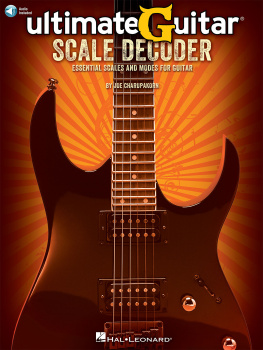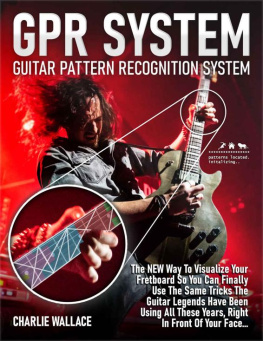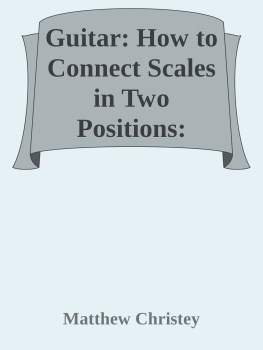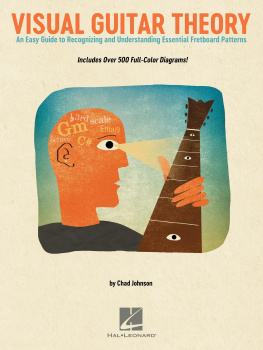Chapter I - Introduction
Welcome!
I'm very excited to teach you very simple techniques thatwill allow you to build a great framework of scales.
This eBook is for guitarists who either know nothing aboutscales, or who have a little bit of experience with scales, but can't seem tomaster the information.
To you, scales may seem boring, unnecessary, tedious, orjust too complicated. In my opinion, this is because scales are taught as tinypieces of a complicated puzzle.
The method that you will learn in this eBook will tie allthe pieces together for you. Once I've taught you the necessary skills, allyou'll have to do is practice them until they are a part of you (and yes, youstill have to do some practicing).
First, we will cover the major and minor scales by theirintervals. You will find that the scales are connected in a very interestingway.
Second, I will teach you how to play the scales vertically(from string to string).
Third, you'll learn how to play scales horizontally (fromone part of the neck to the other).
Last, we'll strip away some notes of the scales to createthe pentatonic scales.
By the end, you'll have created a nexus of notes in allparts of the fret board, which means that you'll always be able to figure outhow to play any of the four scales on your guitar:
- Natural Major scale
- NaturalMinor scale
- MajorPentatonic scale
- MinorPentatonic scale
This ebook will use several charts, for both left-handed andright-handed players, to illustrate the point.. Keep in mind that every singlechart are is part of one scale. I'll explain this a little later.
Please take the time to read through the exercises below,with guitar on lap. You'll be delighted to find your perspective on scalesshift for the better.
Chapter II - Review of Natural Major and Minor
The famous composer, Debussy, has referred to the admirablequality of music as "the space between the notes". Lots of peoplemisattribute this quote to the silence between the notes of a song.
It actually refers to the 'dividing of the notes'; thismeans that there are spaces between notes that distinguish between a highernote and a lower notein pitch. That space iscalled an interval .
A series of notes with a specific sequence of intervals iscalled a scale .
The major and minor scale is made up of small intervals; nonote in either of these scales is greater than two semitones apart (if youdon't know what a semitone or a whole tone is, a quick search will help youout).
The natural majors and minor scales are quite similarbecause they share a similar sequence of intervals. We will eventually comparethe two, but let's start with one at a time.
Don't worry if you don't understand the concepts right away,don't worry; it will all be represented in a nifty visual chart.
Major:

In thisscale, the C note is the root, which means that the scale startsand ends there.
The ^ symbol indicates that the two notes on each side are onesemitone apart.
So, B and C, and E and F, are one semitone apart.
The rest of the intervals are two semitones apart.**
Minor:

Noticeanything similar about this scale?
It is the same scale as the major scale, but the root is A instead of C.It's a different starting point.
Theintervals are exactly the same , so B and C, and E and F are one semitone apart in bothscales.
Interestingly,you can begin your scale on B, (D, E, F, or G), play an octave scale, andyou'll get a different sound or "feel" from each one. This is whatare called the modes, where you may have heard of names like 'Lydian','Dorian', or 'Mixolydian'.
Or, you canchange the intervals in the scale, and so you will have an entirely differentscale. We won't be covering that today.
But, here'swhere it gets pretty interesting...
We canfigure out a way to group the notes of this scale together into a set that'seasy to remember, and easy to play, wherever you want on the fret board.
Let's jumpto the next page and cover this directly.
Chapter III - Dividing The Major/Minor ScaleGroups
Let's dividethe scale into 2 or 3 note groups. It will be color coded for simplicity, aswell as easy to reach with our fingers without having to stretch or changepositions.

There are 5note groups in this set, and they repeat themselves forever. Notice theorange-ey colored group (B^CD) that appear at the start and end of thisexample.
After B^CD,you have E^FG, and then it's AB^C, then DE^F, GA, and on and on. This is alwaystrue of the natural major and minor scales; by this I mean that the notes groupthemselves very naturally this way.













